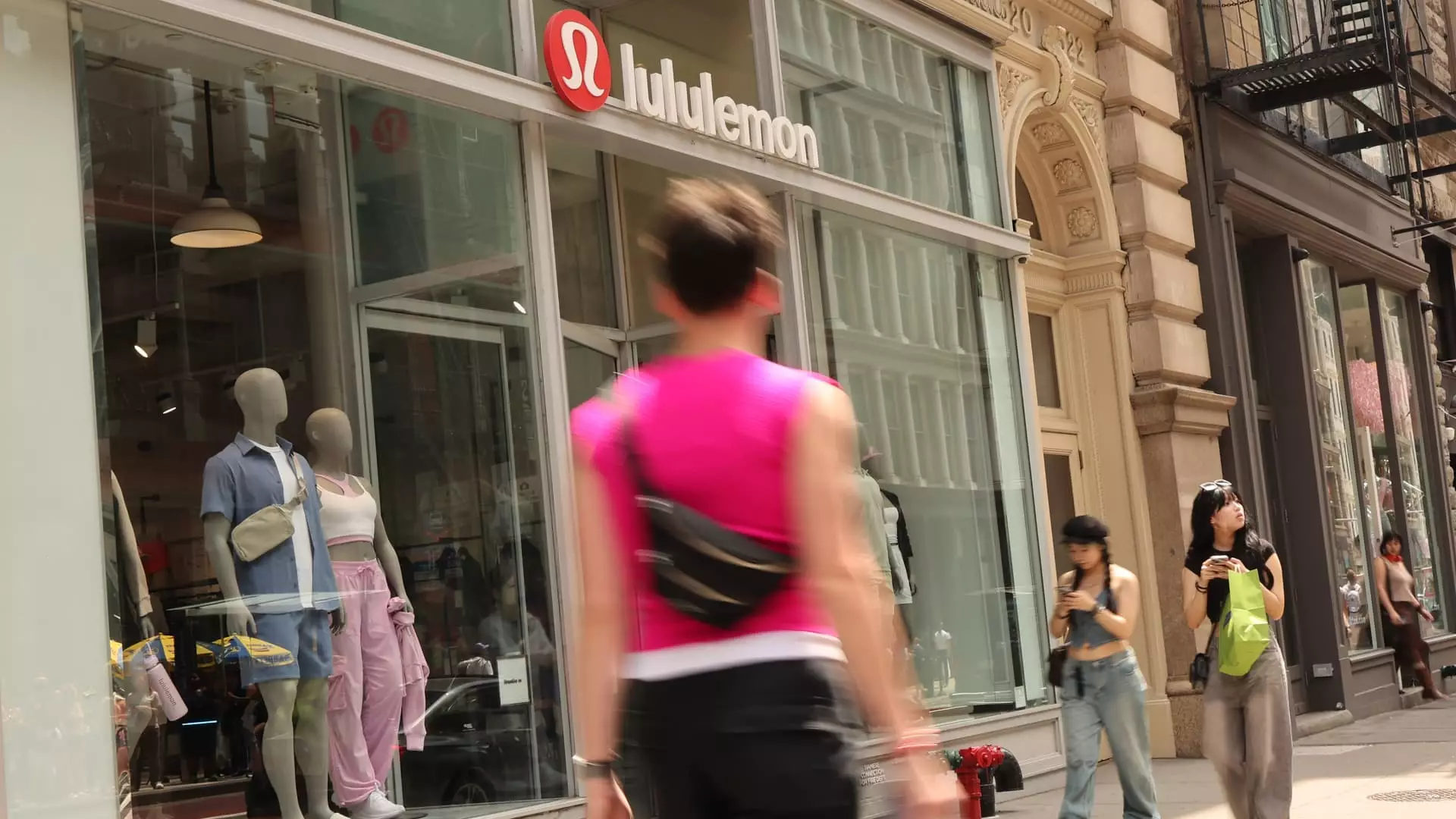In the world of retail, endurance is often celebrated, but Lululemon Athletica seems to be tangled in a web of disillusionment. While they recently outperformed the earnings per share expectation of $2.58 by posting $2.60 for the fiscal first quarter, the subsequent plunge in their stock by about 20% during after-hours trading has laid bare the fragility behind such a seemingly robust figure. The pulse of the company reflects an unsettling truth: meeting expectations does not equate to stability when the market landscape is rife with uncertainties.
Lululemon’s CEO, Calvin McDonald, aimed to instill a sense of confidence by proclaiming the intent to “leverage our strong financial position,” yet these words ring hollow against the backdrop of declining outlooks. Facing a “dynamic macroenvironment,” a phrase, albeit vague, that serves as a catch-all excuse for a myriad of challenges, raises more questions than it answers. Can a company truly thrive as an ‘offensive player’ when its trajectory appears more defensive, fraught with fears of tariff impacts and slowing economic conditions?
Shifting Strategies Amidst Rising Tides
The company’s recalibration of its full-year earnings guidance—from a predicted range of $14.95 to $15.15 down to $14.58 to $14.78—makes one ponder the authenticity of their previous forecasts. This substantial alteration draws several red flags. While analysts had only anticipated earnings per share of $14.89, Lululemon’s sharp downward adjustment signals not only caution but also a reactionary approach as it attempts to mitigate unseen risks. A lack of foresight can be detrimental, weakening investor morale and trust previously built over years of growth.
Moreover, Lululemon’s quarter-over-quarter performance tells a story of stagnation with a mere 1% rise in comparable sales year-over-year, falling considerably short of Wall Street’s predictions of 3%. This lack of momentum—coupled with a decline in domestic sales—highlights a potential erosion of brand appeal. While the international market is buoyed by a 6% increase, the deficits within the Americas are particularly concerning, reiterating the challenges faced by retailers in the wake of shifting consumer preferences and economic pressures.
Then there’s the broader context, with Lululemon embroiled in the same treacherous waters as competitors like Gap and American Eagle Outfitters, both of whom have also slashed profit outlooks amid tariff-driven price hikes. In an era where consumers are increasingly price-sensitive, especially in the current economic climate, the capacity to raise prices without alienating your customer base has become a pivotal challenge. As other retailers chalk up the financial implications of tariffs to millions of dollars lost, Lululemon’s strategy to maintain price points while navigating these storms appears fraught with risk.
The Long-Term Viability Questioned
Understanding Lululemon’s manufacturing reliance sheds light on their vulnerability in these turbulent times. Their manufacturing distribution—predominantly spread across countries like Vietnam and Bangladesh—puts them directly in harm’s way as tariff policies fluctuate. Data suggests that roughly 40% of their products come from Vietnam alone, making them susceptible to external economic pressures and regulatory changes. The reliance on third-party manufacturers signifies a potential disconnect between production control and supply chain agility, which could hinder adaptability in times of crisis.
Delivering a gross margin of 58.3% that exceeds expectations may sound encouraging, but is it truly sustainable when juxtaposed against the ominous shadows of increased operating costs? This kind of margin does not guarantee growth; rather, it may signify an overemphasis on profitability at the expense of long-term strategy and brand loyalty.
As of now, the trajectory for Lululemon looks unsteady at best, with a notable drop of about 13% in share price for the year. This decline is reminiscent of a broader trend in retail, one where companies that once stood firm are now grappling with multifaceted challenges. The essence of Lululemon’s brand, which once thrived on the principles of community and wellness, now appears undermined by market dynamics and strategic missteps. It invites serious reflection on whether the company can pivot effectively, not just survive, but rejuvenate its reputation and market position in a world increasingly characterized by volatility and distrust.

Leave a Reply